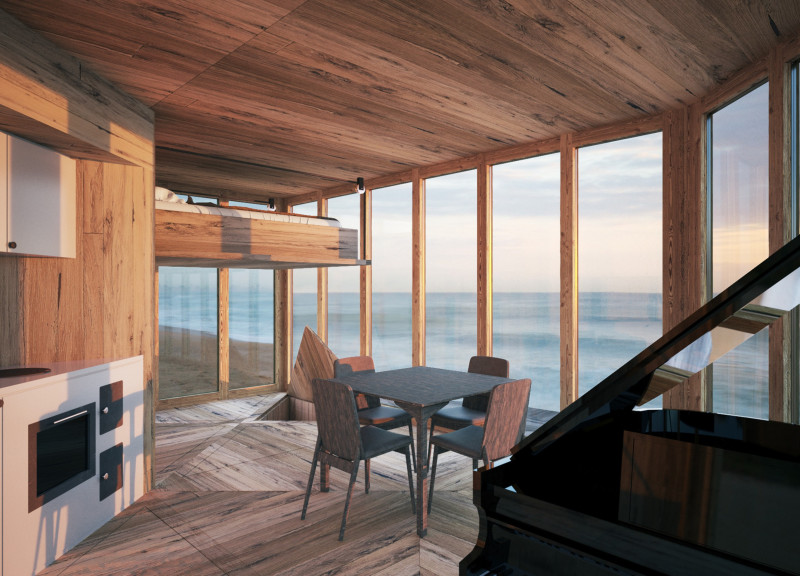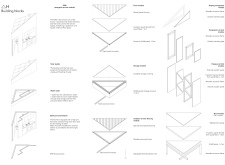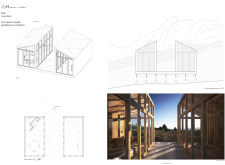5 key facts about this project
The design by AH addresses the need for sustainable living solutions in urban settings. It focuses on creating compact micro-houses that emphasize simplicity and energy efficiency. Central to the design is the Energy Service Module (ESM). This module acts as the main component of the dwelling, providing essential functions like the kitchen and bathroom within a small footprint.
Energy Service Module Design
The ESM features a compact design that minimizes space while integrating energy services. A total of 16 basic modules come together to form a living area of 25 square meters, with two modules dedicated to energy functions. This modular layout simplifies construction and allows for flexibility, making it possible to adapt the design to various personal and environmental needs.
Sustainable Materials and Construction
A focus on sustainability is evident in the material choices. The structure is primarily made from wood, which provides a lightweight yet durable framework. Insulation panels made from wood fibers enhance energy efficiency by improving thermal performance. The overall design is minimal, prioritizing function while maximizing usable space within the compact home.
Integration of Renewable Systems
Renewable energy systems are a key aspect of the design. Photovoltaic and thermal solar panels generate electricity and heat water, minimizing the dependence on traditional energy sources. Rainwater collection and filtration systems are incorporated into the roof and foundation, ensuring effective water management. These features help reduce the environmental impact of the dwelling while supporting sustainable living practices.
Interior Flexibility and Functionality
The interior layout is designed with user flexibility in mind. Movable furnishings allow residents to reconfigure their spaces according to their needs. Curtains can be added around the perimeter of each module to create privacy and define areas within the home. Natural light floods the interior through a sloping transparent module that uses double chamber glass, enhancing the open feel while contributing to energy efficiency.






















































